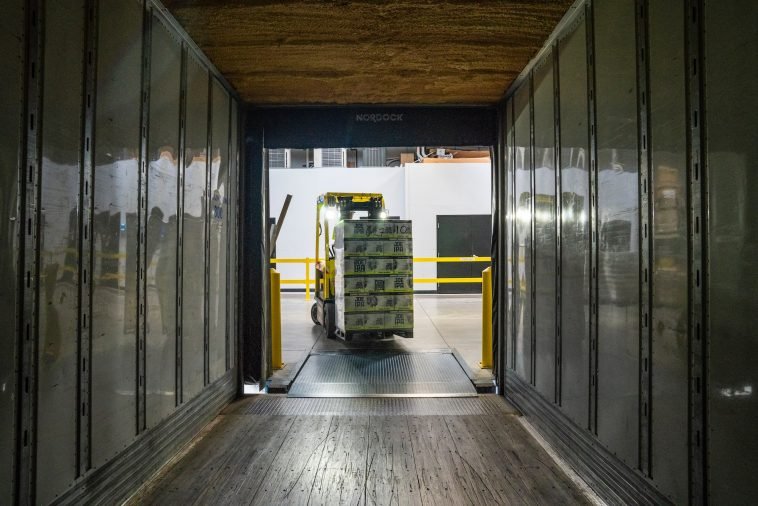Introduction.
When diving into the world of e-commerce, you’ll often encounter two popular business models: print-on-demand (POD) and traditional dropshipping.
While both methods offer the allure of starting an online business without holding inventory, they operate quite differently.
Understanding these differences can help you choose the model that best aligns with your goals and resources.
Print-on-demand is a fulfilment process where you sell customized products — such as t-shirts, mugs, or phone cases — without needing to keep any stock.
When a customer places an order, the product is printed and shipped directly from a third-party provider. This model allows you to offer unique, personalized items without upfront costs or risk of unsold inventory.
On the other hand, traditional dropshipping involves partnering with a supplier who handles inventory and shipping.
You create an online store, list products from the supplier, and when an order is placed, the supplier ships the product directly to the customer.
Unlike POD, dropshipping doesn’t focus on customization but offers a wider range of products that can be sourced from various suppliers.
Both models eliminate the need for warehousing, but they differ in key areas such as product customization, supplier relationships, and profit margins.
For instance, according to a 2023 survey by Statista, the global print-on-demand market is projected to reach $10.4 billion by 2025, highlighting its growing popularity.
In contrast, the dropshipping market is also on the rise, with a projected market size of $557.9 billion by 2025, according to Grand View Research.
In this post, I’ll break down the nuances between print-on-demand and traditional dropshipping, exploring their respective advantages and challenges.
What Is The Difference Between Print-on-demand and Normal Dropshipping?
When it comes to eCommerce, both print-on-demand (POD) and dropshipping are attractive options for running a business without worrying about inventory.
However, there are some key differences between the two, and understanding these distinctions can help you choose the right model for your online store.
Let’s break down each method and see how they compare.
What Is Print-on-Demand?
Print-on-demand is a fulfilment process where custom designs (like t-shirts, mugs, or posters) are printed only after a customer orders them.
As the store owner, you can upload your design to products offered by a POD provider.
When someone buys an item from your store, the POD provider prints and ships it directly to the customer.
Key Benefits of Print-on-Demand:
- No inventory: You don’t need to stock any products. The provider handles printing and shipping.
- Customization: You have the freedom to create unique designs for a wide range of products, making it ideal for businesses with a creative twist.
- Low upfront cost: Since you’re only charged for the product after a sale, there’s minimal upfront investment.
Challenges of Print-on-Demand:
- Limited product options: POD services typically offer only specific types of products, like apparel, accessories, or home décor.
- Higher cost per item: Each product is printed individually, which can make production costs higher than bulk manufacturing. As a result, profit margins may be lower unless you price products accordingly.
- Delivery times: The custom printing process can slow down fulfilment, meaning customers may wait longer to receive their items.
What Is Normal Dropshipping?
Dropshipping is a broader business model where you sell products from a supplier without holding any inventory.
When someone purchases from your online store, the supplier ships the product directly to the customer.
In contrast to POD, dropshipping doesn’t involve the customization of products. You’re reselling items that already exist in the supplier’s catalogue.
Key Benefits of Dropshipping:
- Wide product range: With dropshipping, you can sell almost anything — from electronics to beauty products, home goods, or clothing.
- No inventory or storage: Just like with POD, you don’t have to worry about stocking products or managing logistics. The supplier handles fulfilment.
- Scalability: It’s easy to expand your product offerings without worrying about additional overhead costs. You can add new products to your store at any time.
Challenges of Dropshipping:
- Low-profit margins: Since multiple sellers can sell the same products, the market can become oversaturated, leading to price competition. This can make it difficult to maintain healthy profit margins.
- Less control over quality: You rely on your supplier to deliver quality products on time. If they fail to do so, it can hurt your brand’s reputation.
- Lack of uniqueness: Since you’re reselling mass-produced products, it can be harder to differentiate your store from competitors.
Comparing Print-on-Demand and Normal Dropshipping
1. Product Customization.
- Print-on-Demand: You have full creative control over the design of your products. This allows for a unique brand identity, making your store stand out.
- Dropshipping: You’re selling pre-made products that others also have access to. Differentiation often comes down to your marketing efforts or customer service, not the products themselves.
2. Profit Margins.
- Print-on-Demand: Margins can vary widely depending on the products you sell and how much you charge. Because each item is custom-printed, production costs tend to be higher, which can squeeze your profit.
- Dropshipping: While dropshipping products often have lower upfront costs, the competition can drive prices down, meaning lower profit margins unless you find a niche with limited competition.
3. Shipping Times.
- Print-on-Demand: Since each product is made to order, fulfilment times are longer. Customers might need to wait several days or even weeks to receive their products.
- Dropshipping: Shipping times can vary depending on where your supplier is located. If you source products from overseas (especially from places like China), delivery can take weeks. However, some local suppliers offer faster shipping.
4. Inventory Risk.
- Print-on-Demand: There’s virtually no risk of being stuck with unsold inventory. Products are printed only when a customer orders them.
- Dropshipping: While you don’t hold inventory, there’s always the risk of your supplier running out of stock for popular products, which can lead to delays or lost sales.
5. Branding.
- Print-on-Demand: POD services typically offer branding options, such as custom labels and packaging. This helps create a more cohesive brand experience for your customers.
- Dropshipping: Most dropshipping suppliers don’t allow much room for branding, which can make it harder to establish a unique brand identity.
Which One Should You Choose?
It depends on your goals and how you want to run your business.
- If you’re a creative individual looking to build a brand around unique designs, print-on-demand may be the best fit. You can develop a distinctive brand with custom products, though you might sacrifice some profit margins and speed.
- On the other hand, if you want to offer a wide range of products and focus on marketing rather than product development, dropshipping might suit you better. However, expect more competition and thinner profit margins.
Both models offer a way to start an eCommerce business with low upfront costs, and it’s possible to combine them. Some sellers use dropshipping for standard products and POD for custom items, offering the best of both worlds.
In the end, the best choice comes down to your business vision and what you’re willing to prioritize — whether that’s creativity, fast growth, or diverse offerings.
Conclusion.
In conclusion, while both print-on-demand and normal dropshipping offer unique advantages, it’s essential to understand the key differences to make an informed decision for your business.
Print-on-demand provides personalized products with minimal upfront investment, making it ideal for those who want to test market designs or offer niche products.
On the other hand, traditional dropshipping is better suited for those seeking a wider product range and a more established supply chain.
Ultimately, the best choice depends on your business goals and target audience.
Consider factors such as product customization, inventory management, and shipping times to determine which approach aligns best with your needs.
Which method is the better fit for your business? Let me know in the comments below!





GIPHY App Key not set. Please check settings